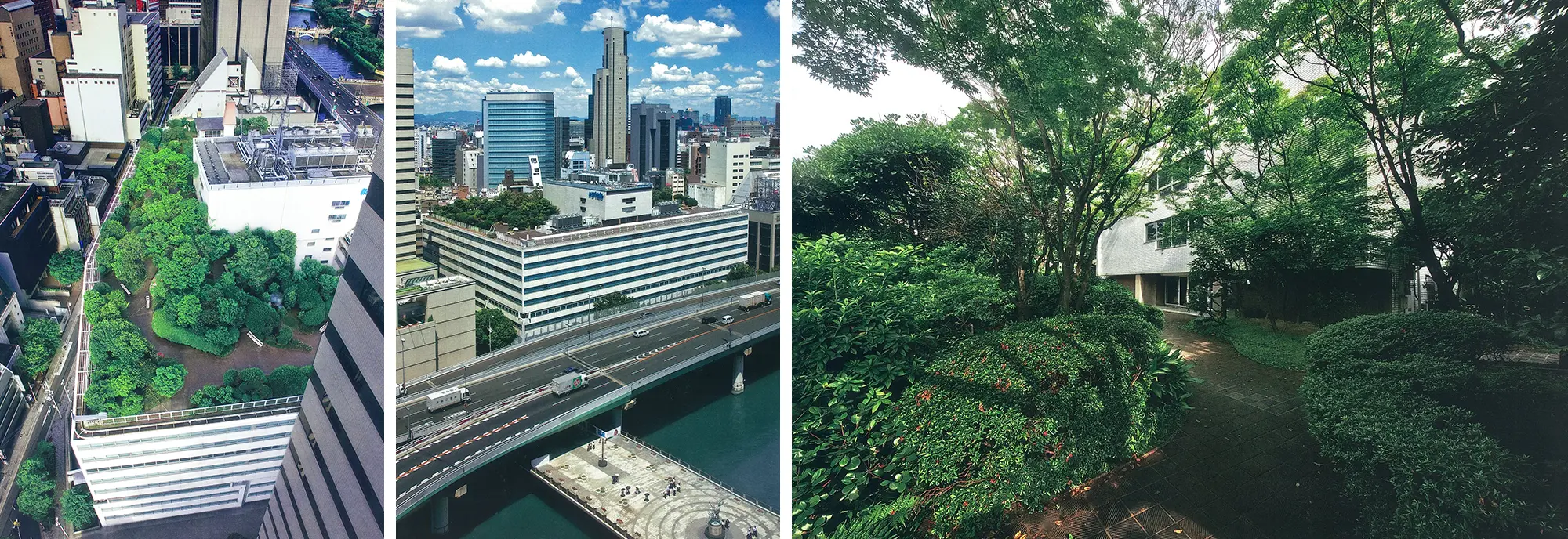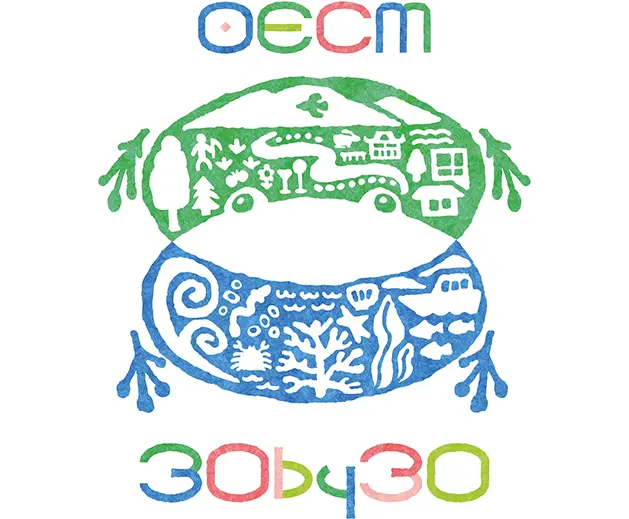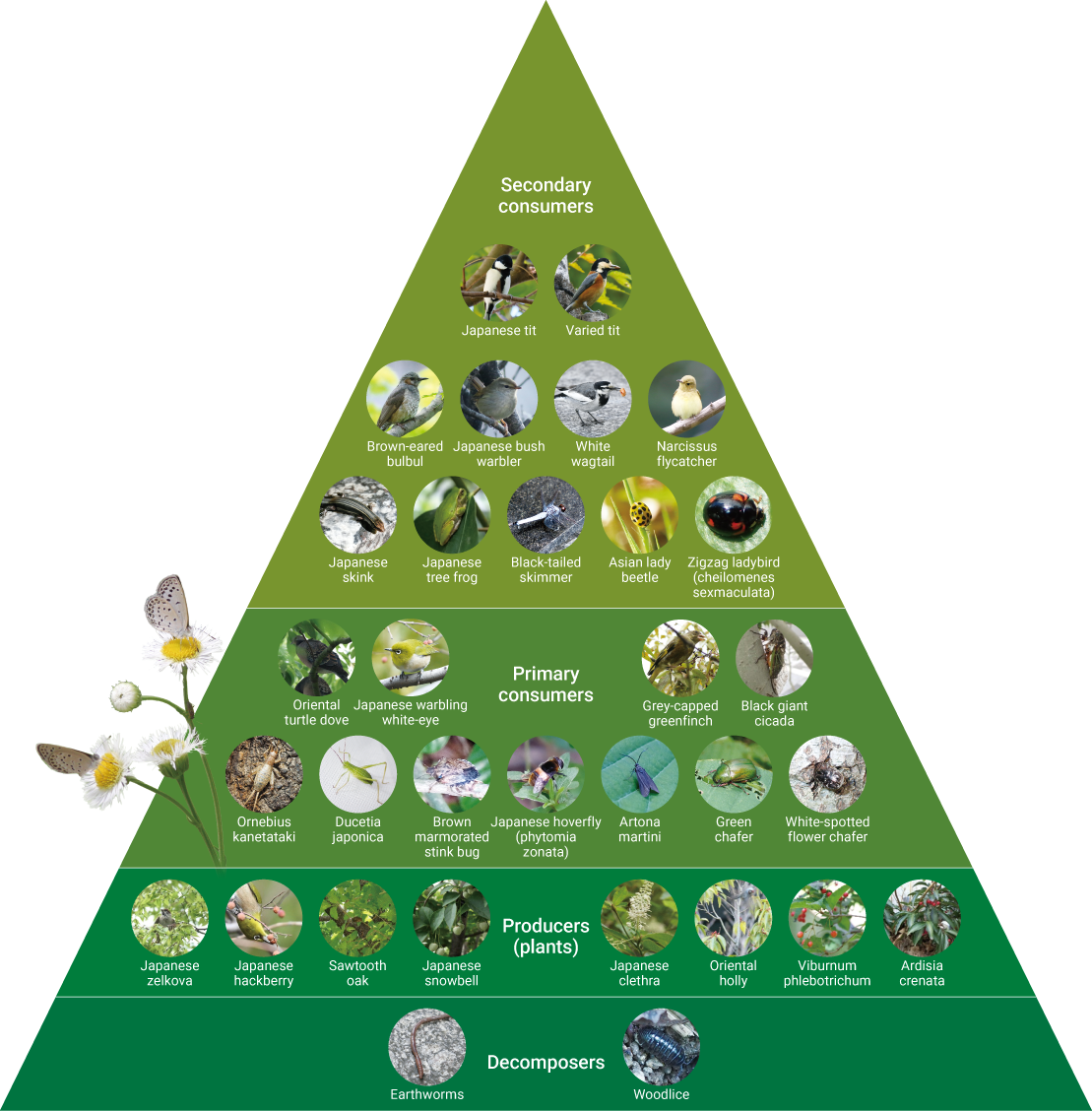SustainabilityThe spirit of sustainability thrives at DaibiruSpecial Feature: Coexisting with nature (Shin-Daibiru Building)
The former North Wing of the Shin-Daibiru Building, completed in 1963, was Japan’s first-ever rooftop tree garden. This innovation was driven by Tomoe Kudo, then president of Daibiru, and his profound understanding of both civil engineering and nature conservation.


Land development is crucial for people to live and improve their lives.
Tomoe Kudo
Osaka Building Co., Ltd. (Currently Daibiru Corporation) Then-President
Although land can be developed through civil engineering, one cannot deny that civil engineering as we know it essentially means the destruction of nature. By this logic, civil engineering would seem destined to be at odds with the need to protect nature.
But those who resign themselves to fate do not deserve the pride of being human. The reason people believe that the need to protect nature and land development through civil engineering cannot coexist is the false premise that these are two separate and opposing ideas that require a choice between one or the other. Rather, it must be said that our ability to engage in civil engineering that can develop land for human life while also protecting nature and maintaining the living environment for all living things, great and small, is proof that intellect resides in humanity, and that is what makes humanity the most powerful of all things.
(Excerpt from the April 1967 issue of Architecture and Society)
Cultivating a forest friendly to people and wildlife alike
The Shin-Daibiru Building Dojima-no-mori (lit. "Dojima Forest") carries on the spirit of the rooftop tree garden of the former Shin-Daibiru Building. In addition to transplanting some of the 50-year-old trees from the old rooftop tree garden, which included Japanese maples and elms, we created a 3,300 m2 green space, roughly the same size as the previous garden, using mainly native species. Biodiversity monitoring surveys conducted by external agencies in 2016 and 2020, after the completion of the Shin-Daibiru Building Dojima-no-mori, confirmed that a stable food chain had been established within the forest. A habitat in the urban area like this is precious for birds and insects, and its contribution to the ecosystem was highly evaluated.
Coexistence with the natural environment
Together with our parent company, Mitsui O.S.K. Lines, Ltd., we have joined the 30by30 Alliance for Biodiversity, where we are promoting various initiatives to achieve the 30by30 target, which aims to conserve over 30% of land and sea by 2030. In October 2023, as a measure to promote the 30by30 target, Dojima-no-Mori at the Shin-Daibiru Building was recognized by the Ministry of the Environment as an Other Effective Area-based Conservation Measure (OECM).* During the certification process, the site was praised for its "important role as a rare green space within the city."
Moving forward, we will continue to promote ecosystem-conscious environmental conservation, primarily through the maintenance of green spaces within our building premises.
- *"Areas where biodiversity is being preserved through private initiatives" are certified by the government and registered in an international database.

Ecosystem pyramid

- Note)All photos were taken in the Shin-Daibiru Building Dojima-no-mori.
Survey period
- First survey: April 2016 – March 2017
- Second survey: April 2020 – March 2021
Species identified by field survey
Birds:
- First survey: 15 species
- Second survey: 18 species
Japanese tit, brown-eared bulbul, Japanese bush warbler, varied tit, oriental turtle dove, Japanese warbling white-eye, etc.
Insects:
- First survey: 54 species
- Second survey: 68 species
Broad-headed mantis, black-tailed skimmer, common bluebottle, etc.


